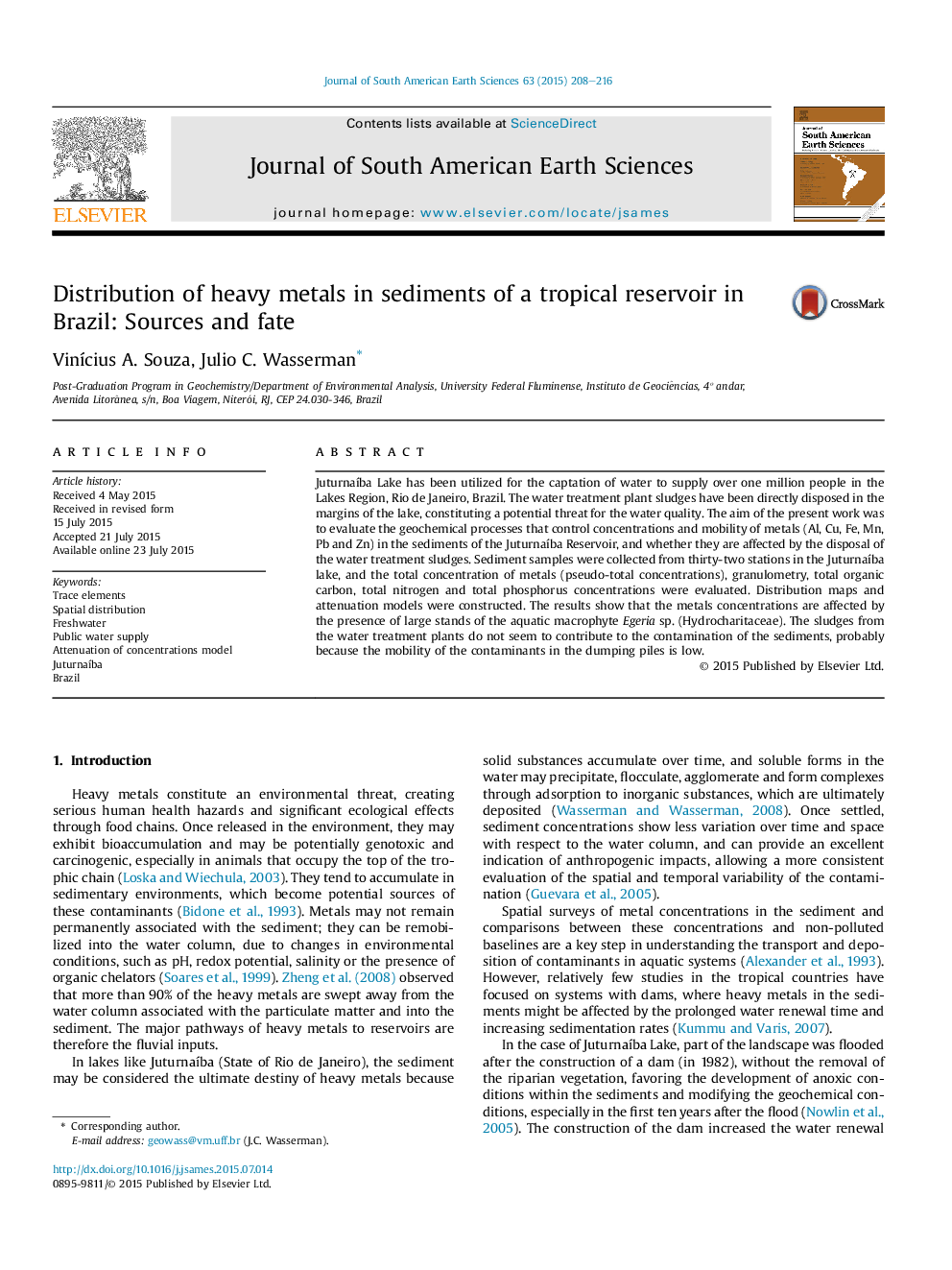| کد مقاله | کد نشریه | سال انتشار | مقاله انگلیسی | نسخه تمام متن |
|---|---|---|---|---|
| 4682162 | 1635146 | 2015 | 9 صفحه PDF | دانلود رایگان |
• Metals concentrations were evaluated in surface sediments.
• Mobility of the metals was assessed with a spatial distribution model.
• The presence of water treatment plants do not affect metal concentrations.
• Macrophyte stands seem to have a crucial role on the metal concentrations.
• Erosional process in the margins does not significantly affect metals distribution.
Juturnaíba Lake has been utilized for the captation of water to supply over one million people in the Lakes Region, Rio de Janeiro, Brazil. The water treatment plant sludges have been directly disposed in the margins of the lake, constituting a potential threat for the water quality. The aim of the present work was to evaluate the geochemical processes that control concentrations and mobility of metals (Al, Cu, Fe, Mn, Pb and Zn) in the sediments of the Juturnaíba Reservoir, and whether they are affected by the disposal of the water treatment sludges. Sediment samples were collected from thirty-two stations in the Juturnaíba lake, and the total concentration of metals (pseudo-total concentrations), granulometry, total organic carbon, total nitrogen and total phosphorus concentrations were evaluated. Distribution maps and attenuation models were constructed. The results show that the metals concentrations are affected by the presence of large stands of the aquatic macrophyte Egeria sp. (Hydrocharitaceae). The sludges from the water treatment plants do not seem to contribute to the contamination of the sediments, probably because the mobility of the contaminants in the dumping piles is low.
Filter cleaning effluent of a treatment plant for water supply in Juturnaíba Lake. The application of chemicals, and particularly aluminum compounds in the process generates a contaminated sludge that is dumped in the system.Figure optionsDownload as PowerPoint slide
Journal: Journal of South American Earth Sciences - Volume 63, November 2015, Pages 208–216
